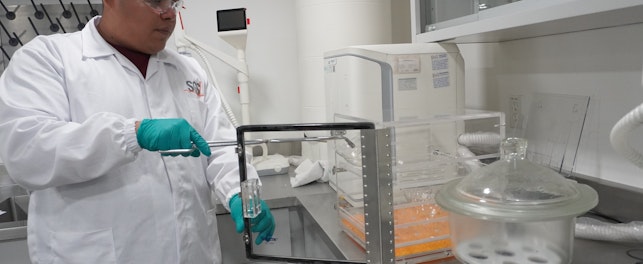On May 23, 2023, the European Union (EU) published Regulation (EU) 2023/988 – the General Product Safety Regulation (GPSR). We answer some commonly asked questions.
The challenges in regard to product safety are constantly evolving. New technologies, growth in online sales, inconsistencies around complex market surveillance rules, lack of efficiency in product recalls and the need to align regulation provisions to ensure standardization have all led to the need for an update to the EU General Product Safety Directive (GPSD), Directive 2001/95/EC.
Published in the Official Journal of the EU (OJEU) on May 23, 2023, the GPSR entered into force on June 13, 2023, and shall apply from December 13, 2024. It replaces the GPSD and Directive 87/357/EEC, related to Food Imitating Products, and amends Regulation (EU) 1025/2012 and Directive 2020/1828, pertaining to standardization and consumer protection. As a regulation and not a directive, it imposes clear and detailed rules in relation to product safety without the risk of divergent transposition by Member States.
It should be noted that the answers given below are for the purpose of advice and guidance in good faith based on information that SGS believes to be accurate. They should not be taken as a legal interpretation of the law.
1) What products come under the scope of the GPSR?
The GPSR is a framework regulation and does not have a specifically detailed scope. However, more generally, it applies to any product made available on the EU market, whether new, used, repaired or reconditioned.
Article 2 (2) does contain a list of exclusions. These include:
- Medicinal products (human or veterinary)
- Food and feed
- Living plants and animals, genetically modified organisms
- Animal by-products and derived products
- Plant protection products
- Equipment on which consumers ride or travel where that equipment is directly operated by a service provider (not operated by the user themselves)
- Aircraft
- Antiques
2) What is the aim of the GPSR and the role of the European Commission?
The fundamental aim of the regulation is to reinforce and harmonize the rules for guaranteeing the safety of products placed onto the EU market. The conditions for recalls and notifications on potentially dangerous products will be harmonized to ensure conformity in practice across all nations of the EU.
The European Commission is currently working on a guide that will help you better understand your obligations and the best way to proceed. The EU is expected to issue further communications in due course.
3) How are economic operators defined in the GPSR?
The regulation specifically defines each economic operator’s role in Article 3.
The main definitions can be summarized as:
- Manufacturer – natural or legal person who manufactures a product, or has a product designed or manufactured, and markets that product under its name or trademark
- Importer – natural or legal person established within the EU who places a product from a third country onto the market
- Authorized representative – established in the EU and with a written mandate from the manufacturer to act on their behalf in regard to its legal obligations under the regulation
- Provider of an online marketplace – provides an intermediary service using an online interface that allows consumers to contact distant traders for the sale of products
Compliance and conformity
4) How should I assess conformity?
Articles 7 and 8 of the GPSR list the elements to be taken into account, when available, for assessing product safety.
Stakeholders will need to consider:
- European standards that have been published in the OJEU
- European standards where references have not been published as well as international and national standards (Article 8)
- International agreements
- Voluntary certification schemes or similar third-party conformity assessment frameworks
- Commission recommendations or guidelines on product safety assessment
- Sector-enforced state-of-the-art technologies or product safety codes for good practice
- Reasonable consumer expectations concerning safety
- Safety requirements adopted in acts implemented by the European Commission that will be covered by European standards, which will be listed in the OJEU
5) What about technical files and risk assessments?
A technical file gathers all relevant information relating to product safety. It will include test reports, risk assessments (that are the responsibility of the manufacturer), information on traceability, etc.
What is contained within the risk assessment will depend on the complexity of the product and the potential hazard levels. If relevant, it must address, inter alia, physical, mechanical, flammability and chemical hazards. For example, there are no physical or mechanical hazards associated with a plain t-shirt, but chemical safety must be assessed to ensure harmful substances have not been used during manufacturing.
Various sources are available to help manufacturers develop a relevant risk assessment, but there is no official single template. Depending on the product category, information can be found through the European Safety Gate or in Technical Reports published by the European Committee for Standardization (CEN).
Article 18 of the General Data Protection Regulation (GDPR) has a reminder that the Commission shall indicate in relevant delegated acts whether it has used the risk analysis methodology defined in Commission Implementing Decision (EU) 2019/417 or, if this methodology is not appropriate for the product concerned, provide a detailed description of the methodology used.
Labeling and instructions
6) What is meant by ‘electronic address’?
The term ‘electronic address’ is used in the regulation to denote progression and technological neutrality. It represents any direct electronic means of communication and could be, for example, an email address or a website that includes a means of communication (contact form, direct chat, etc.) Therefore, the translation of ‘electronic address’ as ‘email address’ in some countries is questionable.
In cases where the manufacturer is located outside the EU, but there is a contact point that is an economic operator other than the manufacturer, information concerning both the manufacturer and point of contact must be affixed to the product or its packaging (Article 9 (6)).
It is also important to remember that a product covered by the GPSR can only be placed onto the European market if there is an economic operator established in the Union responsible for the tasks referred to in Article 4 (3) of Regulation (EU) 2019/1020. Information on this responsible actor must also be displayed on the product or its packaging (Article 16 (3)).
7) How should labels be positioned on a product?
According to the regulation, contact information and a means of identification must be affixed to the product, unless this is impossible. However, it is not completely clear what are the acceptable conditions for determining that a product cannot be marked. Size and technical impossibility are potential reasons, but there are instances where labeling may technically be possible, even if it is very complicated.
Since there are no detailed instructions to follow, this will certainly be determined case by case. However, we think aesthetic reasons will not be valid.
8) What about the CE mark?
The GPSR does not require the CE mark to be affixed to products. However, if any function of the product is covered by a directive or a regulation, for example, Directive 2009/48/EC, the Toy Safety Directive (TSD), then CE marking requirements will still be applicable.
9) What about instructions for use?
Instructions for use must be provided with the product as soon as they are necessary to enable safe use. It should always be remembered not everyone has access to the internet and so there should always be the facility for them to receive instructions in paper format.
Links
General Product Safety Regulation
Regulation on market surveillance and compliance of products
Enjoyed this article?
Find more news and updates in our Consumer Compact newsletter >
Delivered direct to your inbox
Subscribe to Consumer Compact >
© SGS Société Générale de Surveillance SA.





